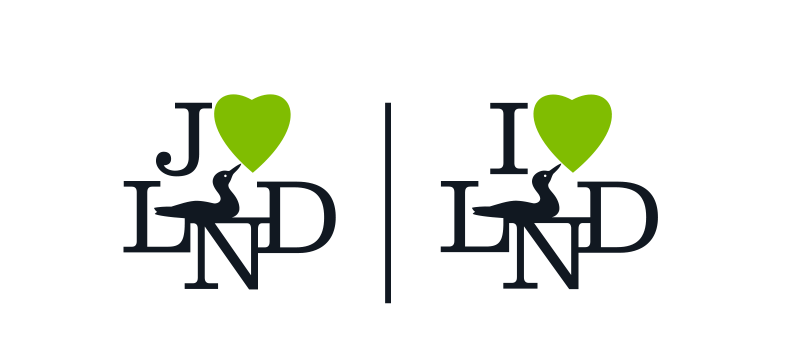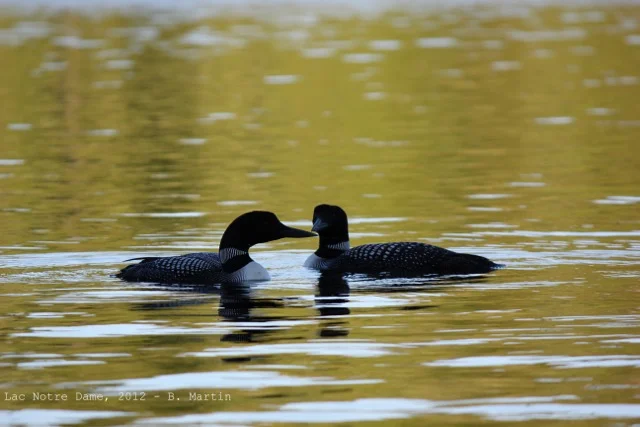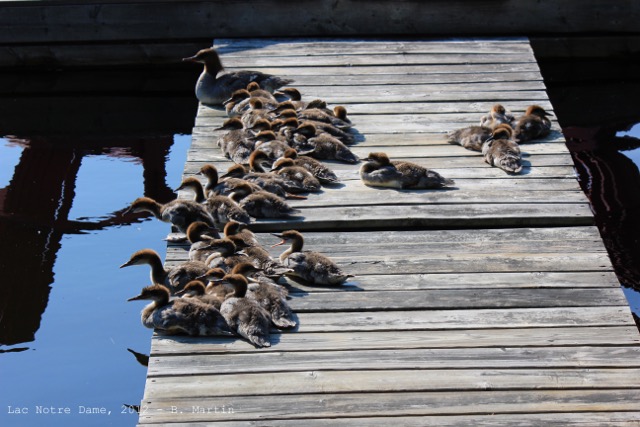Environment
The protection of the environment is the most important objective of our association and the number one priority of our Executive.
To maximize the health of our lake:
We have an environment committee
We test the quality of the lake water every year
We promote shorelines that conform to municipal regulations
We insist that all the residents around the lake have proper septic tanks and systems
We work with the different levels of government to ensure that we have strong environmental regulations
We collaborate with other associations and the Volunteer Lake-Monitoring Program (VLMP)
We inform our members about good environmental practices.
We invite you to check out the info available on the Municiapl website:
https://wentworth-nord.ca/citoyen/environnement/riverain/
Learn More:
Environment Committee
The environment committee is a sub-committee of the LND executive. Its mandate is quite broad. It looks at all issues that have an environmental impact.
Environment Committee Members:
Miklos Fulop
Diane Turcotte
Isabel Fernandez-McAuley
Émilien Doucet
Linda Gobeil
Patricia Healy
Nadine Legendre
Marc-Olivier Martin
Jayne Pollock
Samantha Ryan
Current Projects:
Water testing on an annual basis
Distributing educational materials about how each resident can contribute to a healthy lake (shorelines, septic systems, etc...)
Meeting with the municipality, the MRC, the VLMP, and with other lake associations
Water Quality
General health of the lake
The results of various tests performed since 2010 indicate that the state of our lake is relatively good and stable, but it is showing certain signs of aging (eutrophisation). For example, the tests showed a small increase in the quantity of phosphorous in the water, particularly in July. In order to to slow down the process of premature aging, it is essential to limit the influx of damaging substances that are a result of human activity.
What can be done to help:
Adopt gardening practices that eliminate the use of fertilizers near the shoreline of lakes or other waterways and ditches.
Preserve a band of vegetation on the shore front.
Ensure septic systems conform to regulations and that they are regularly cleaned
Use products that do not contain phosphorus
Annual Water Testing
Since 2008 the Lac Notre-Dame Property Owners Association has participated in the « protocole d’échantillonnage de la qualité de l’eau » put in place by the Réseau de surveillance volontaire des lacs (RSVL).
Results of the RSVL testing since 2008 are found https://www.environnement.gouv.qc.ca/eau/rsvl/relais/rsvl_details.asp?fiche=306
This protocol includes tests for:
Transparency
Phosphorus
Chlorophylle a
Dissolved Organic Carbon
Previous Research
Supplementary Monitoring of Water Quality 2013: Fiche de résultats du Lac Notre-Dame, 2013
Periphyton Testing (2014-2016)
We began a study to test for periphyton in 2014. Periphyton is algae and bacteria that attaches to the rocks, branches, dock supports and is usually green or brown with a viscous texture. It has been demonstrated that periphyton is a good indicator of phosphorus levels. The more dense the periphyton is in littoral (shallow) areas can be an indicator of poor water quality. It is therefore important to sample the periphyton from year to year in order to have another measure near the shoreline, compared to other tests that are in deeper water.
In order to conduct these surveys, we identified 12 sites where the thickness and appearance of the periphyton will be measured. These tests are being conducted over a period of three years
to find out more about periphyton consult: http://www.crelaurentides.org/images/images_site/documents/troussedeslacs/Protocoles/protocole_periphyton.pdf
To see the location of the 12 testing sites for périphyton, click here.
Blue-green Algae or Cyanobacteria
Blue-green Algae (cyanobacteria) are microorganisms that are naturally present in the lakes and rivers of Quebec in weak concentrations. They do not generally cause problems. Under certain conditions, blue-green algae reproduce rapidly and in large quantities - this is referred to as an algae bloom.
http://www.environnement.gouv.qc.ca/eau/flrivlac/algues-en.htm
What to do if you suspect there is an outbreak of Blue-green Algae:
Take a sample of water and store it in the refrigerator, indicating clearly where it was obtained. You may also take a photograph and contact the Environment office at the Municipality of Wentworth-Nord - contact information is found here.
You may also report the situation immediately to the regional office of the Ministry in one of the following ways:
At any time: by completing the form constat visuel and sending it by fax or email to the regional ministry office
During office hours: by telephone to the direction régionale du Ministère and ask to speak to someone responsible the dossier des cyanobactéries;
Outside of office hours: by contacting Urgence-Environnement au 1 866 694-5454.
You may consult the recommandations générales of public health of the MSSS that description the precautions to take in these circumstances: click here (French only)
Shoreline
Shoreline protection is one of the key elements for a healthy lake. Maintaining and in some cases improving the quality of a body of water means paying special attention to its shores and littoral zone. In order to do so, the erosion and degradation of shorelines must be prevented, and the quality and biodiversity of the area must be preserved. The government has prepared the Protection Policy for Lakeshores, Riverbanks, Littoral Zones and Floodplains.
However since policies are not enough, every action that protects, restores, cleans or sanitizes a body of water is important and contributes to maintaining the health of our lake.
Protecting the Lake - Making sure that the Shoreline is healthy
There are several documents available from different levels of government that describe a healthy shoreline. In summary, the essential principles are:
For 5 meters (16 feet) from the high water line (i.e. the highest point at which the lake water touches the shore) the shoreline must be completely natural (i.e. it should be covered by plants, shrubs, or trees)
For 10m (33 feet ) if the slope to the lake is less than 30% (and 15m (49 feet) if the slope is more than 30%) from the high water line the grass should not be cut and the vegetation should be left to grow naturally
For 30 meters (98 feet)from the high water line, there should not be any use of fertilizers, herbicides, pesticides or pH regulators(lime)
A winding path to the lake, no wider than 5m is allowed
For more information on this subject, the following documents can be consulted.
See the Municipality of Wentworth-Nord guidelines here
Ministry of Environnement Quebec, a document titled "Je végétalise".
CRE Laurentides document: The Shoreline - the Lake’s Natural Shield
Shoreline Vegetation
It is important to plant trees , shrubs and plants that are indigenous to LND. These plants provide the optimum protection for the lake and need less care, do not need fertilizers and they look great. In the last few years the municipality has organized the collective purchase of plants, trees and bushes.. For more information consult a brochure entitled Shorelines at Work, from CRE Laurentides.
Nature Conservancy (NCC)
Much of the property on the non-lake side of LND and almost all the access points on the lake are owned by the Nature Conservancy of Canada (NCC). It is a non-profit charitable organization committed to the protection of natural diversity for their intrinsic value and for the benefit of Canadians. It uses creativity in the conservation of Canada's natural heritage and secures important natural areas through their purchase, donation or other mechanisms, and then manages these properties for the long term. These lands were the property of M. Diez d’Aux, (the person responsible for the development of most of LND). The LND Association wanted to buy these lands to make sure that no large scale off lake development would take place and thus protect the ecology of the lake. A large amount was collected but not enough to buy all of the property. The LND Executive contacted the Nature Conservancy who agreed to buy the land and hold it in perpetuity. The amount that had been pledged by the owners was donated to Nature Conservancy and the Association was charged with managing the property in the name of the Conservancy.
Provincial and Municipal Regulations
There are strict regulations of what can and cannot be done near the shorelines. These policies (referred to above) are enforced by the municipality of Wentworth Nord.
Septic Installations
The treatment of wastewater is the responsibility of residents in areas such as Lac Notre-Dame that do not have municipal infrastructure for this purpose. Thus various type of septic installations are used by residents to manage their domestic wastewater. Septic systems permit the settling and decomposition of organic components.
Maintenance of your septic system
Septic installations that do not conform to standards are responsible contributing to the premature aging of the lake. Property owners are responsible for ensuring that their septic system is not polluting the environment. Regular cleaning of the system by a certified professionals is required - every 2 years for full-time residents and every 4 years for part-time residents. A copy of the receipt should be sent to the municipality. Owners of secondary treatement systems (Bionest, Biofiltre Écoflo) must have active contracts with the manufacturer or a third party that can verify that regular maintenance is done on the system. A copy of the contract must be registered with the Municipality by December 21 each year.
The following document is a useful resource for better understanding the construction, function and maintenance of a septic system: click here (French only)
Useful Information
The following organizations and governments are useful sources of information for the environment:
Ministry of Sustainable Development, Environment and the Fight against Climate Change of Quebec
Volunteer Lake-Monitoring Program (VLMP) / Réseau de surveillance volontaire des lacs (RSVL): This organization aims to raise awareness, support and inform residents and associations of the importance of keeping Quebec lakes healthy. This organization initiated the project of water quality testing.
CRE Laurentides (Conseil régional en Environnement): Le Conseil régional de l’environnement des Laurentides (CRE Laurentides) has the mission to promote sustantainable development and to protect and enhance the environment.
L’organisme des bassins versants des Rivières Rouge, Petite Nation et Saumon: this organization has the mandate to ensure the integrated management of water and habitats by mobilizing all stakeholders and users of the area. It supports various associations that wish to put activities related to environmental protection in place, such as shoreline restoration and septic system inspections.













